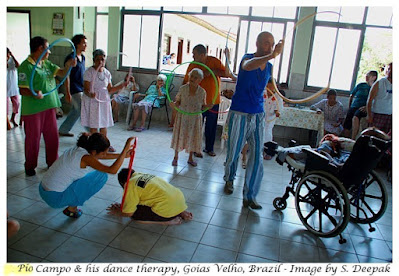While passing through Ulaanbataar (UB), I had seen a strange sculpture with a row of camels standing in a tiny park in the middle of the road. I wanted to look at them properly and photograph them. However, it was a busy crossing, always full of traffic and clicking a picture of those camels from a moving car was impossible. So one afternoon I decided to walk and search for those camels. (click on the images for a bigger view)
Mongolian Hero Genghis Khan
Genghis Khan is the national hero of Mongolia. His statues adorn some of the famous landmarks of the country like the central square of UB in front of the national parliament. They can also be seen in some unlikely places like his giant face designed on the side of a hill overlooking the city. Genghis Khan had led his caravans to conquer the world.Mongolia is the land of nomadic people with their animals including horses, sheep, goats and camels – in fact Mongolia has 10 times more animals/cattle compared to its human population. So those camels could have been a representation of a Mongolian nomad. Thus, those sculptures could be a representation of the great Khan or of a Mongolian nomad.
Old wall-paintings & The Motorbike Guy
This time, I am staying at Shangri-La hotel on Embassy road in UB. I came out of the hotel and started my walk by going towards left, to the Children’s Palace, while across the road I could see Bayangol hotel, which is one of the historical hotels of UB.I have been to Mongolia many times for work related to a disability programme. During my first visit to Mongolia in early 1990s, I had stayed in the Bayangol hotel. At that time UB was a completely different city, as Mongolia was just coming out of decades of a communist regime under the Soviet influence. Hardly anyone spoke English, while many persons spoke Russian. There were only a few buildings in this part of UB at that time while the road was narrow and there was no traffic except for a rare car.
This whole area is now completely transformed, full of sky-scrappers. The much wider road is jam-packed with cars. In the nearby Sukhbataar square there is the new parliament building. It is a beautiful place today with wonderful ambience and colourful buildings.
As I started my walk on Embassy road, I saw some beautiful old wall-paintings along the road. Their colours had faded but I could still make out their designs, which seemed to be telling some Buddhist story regarding the killing of some demon. I hope that these can be rennovated.
Park Place City Marker
Peace Bridge
Going further south along the Chinggis Road I reached the Peace Bridge which passes above Dund-Gol river and Narnii Road, the bypass road of UB made for avoiding the traffic of the city centre.The Blue Horses and the Summer Fountain
Children's Park
Genghis Khan Camel Caravan
In 2015 a competition was held to identify sculptures for UB and in that competition 15 sculptures were selected. These have been placed in different parts of UB, including the motorbike man mentioned above.
In the Silk Road sculptures, initially there was only one statue of a Bactrian camel. Now there are 9 Bactrian camels, one dog and a bearded man on a horse, who may represent Genghis Khan or perhaps a Mongolian nomad. According to the GoGo website, "Initially the camel monument complex was named Migration and the idea of camels facing towards the city center has a meaning of inflow of wealth."
I spent some time walking around the sculptures and clicking pictures while the amused locals, waiting for the bus at the bus-stand across the road looked at me.
To Conclude
Just after the Silk Road monument complex crossing, there was the Palace and Museum of Bogd Khan, who was the first king of Mongolia after its independence from China in early twentieth century. However, I was too tired by this time and decided to leave visiting that to another day.It was a very satisfying walk. It took me a couple of hours, but that was because I was stopping every where to look around and click pictures. If you are in a hurry, you can do it faster. The image below shows another Soviet-era wall-art from a building near the Silk Road complex crossing. I am fascinated by the history hidden in these wall-arts.





















